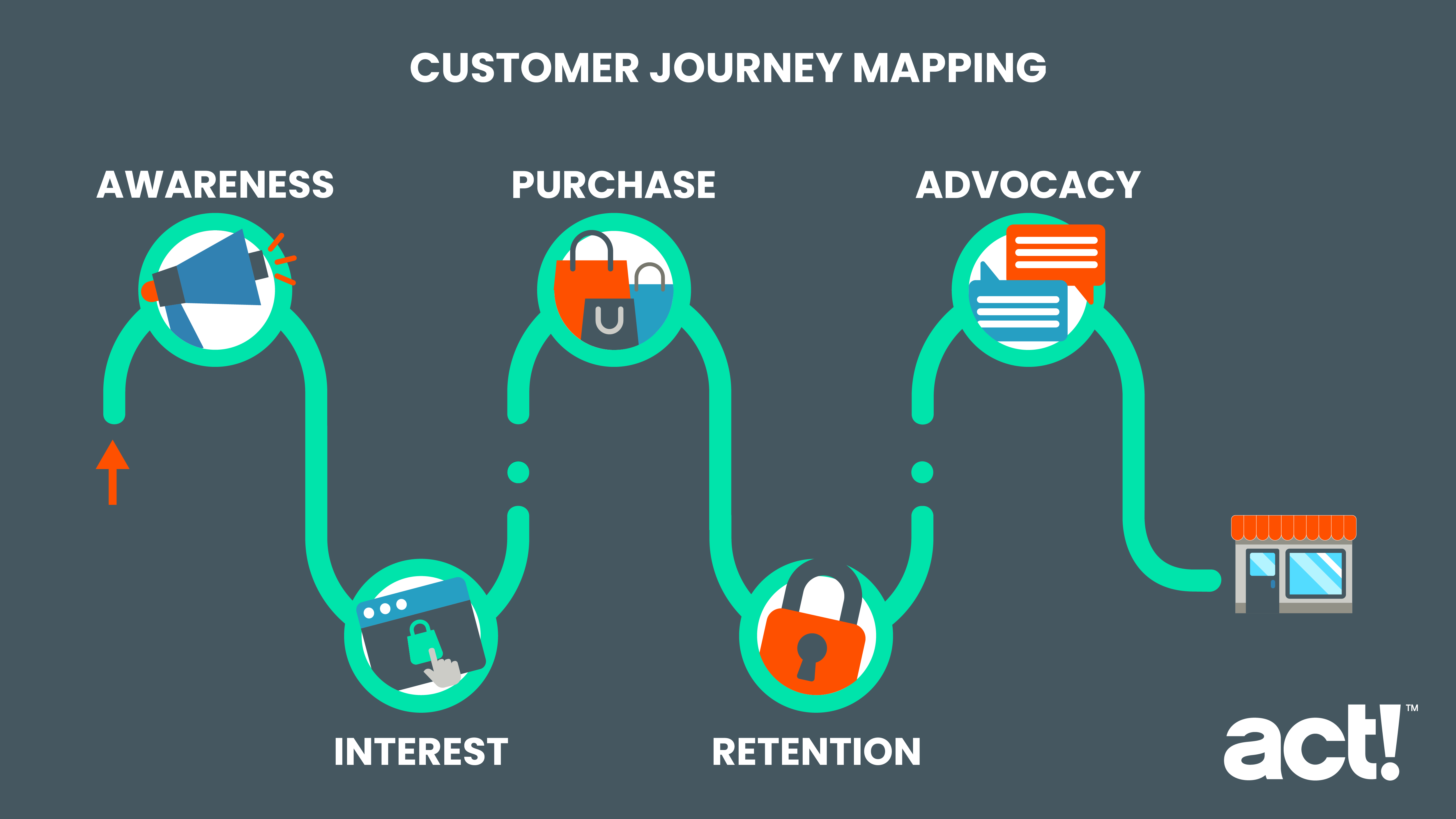
We have covered the powerful process of customer journey mapping in a series of articles which include details on what a customer journey map is, some different types of customer journey maps, and examples of effective customer journey maps. This article will cover how to create a customer journey map.
In brief, a customer journey map is a mindfully created diagram that documents the mental and emotional processes your customers go through when interacting with your business. It is a way of capturing your customers’ experiences from start to finish, enabling the prediction of future behaviors and outcomes. An effective customer journey map is a tool that helps company employees to align with the business mission and goals. It encapsulates customers’ motivations and expectations so that you are best positioned to meet their requirements and improve their overall experience of your brand.
It is worth noting that customer experience is one of the major factors in business growth now. This idea is backed by The Temkhttps Group, which found that companies earning $1 billion per year can expect to earn another $700 million (on average) within three years of investing in customer experience. Take it also from digital analyst Brian Solis, who said in his book X: The Experience When Business Meets Design: “Experiences are more important than products now. In fact, experiences are products.”
If you are wondering how to map customer journeys, check out our detailed pointers below:
A precursor to customer journey mapping
The right mindset must be cultivated and used in combination with collected data. These two factors will become the foundations of your customer journey map. Remember that a customer journey map is simply a guide; one that highlights the best possible courses of action.
Action is equally important, and your map will be the catalyst for refined and considered actions that take your business to the next level. The more you tailor actions to improve the experiences of your various customer demographics, the better.
Most successful businesses are already accustomed to data collection for marketing purposes. Yet although necessary, data is only one part of the equation. It must be analyzed and translated into a concise story, and that story is your map.
How to create a customer journey map
1. Set clear objectives and profile your personas
Firstly, decide on your reasons for creating a customer journey map. What goals do you plan to realize through it? Which business processes will it relate to, who will benefit from it and how? Once you have decided on specific and measurable objectives, you will use them to profile personas.
It helps to create buyer personas so that you have a picture of whom you’re dealing with, characterized in a ‘typical’ buyer profile. To achieve this, you may study metrics, communications, patterns, marketing campaign results, survey results, and whatever else gives insight into customers’ current behaviors and expectations.
These kinds of questions should help you profile your customers and define their expectations and goals:
- Do they prefer to speak with company representatives or are they happy to do this via email or chatbots?
- What motivated them to look for the product or service they got from you?
- How did they conduct research on it?
- Where did they buy it? (E.g. website or store)
- What criteria did they have for making a purchase?
- Which online channels did they use to evaluate products?
- Why did they choose your business and product/service over competitors?
- What do your metrics say about preferences?
- How do they use your website/app, and how do they interact with your business offline?
Ultimately, you are aiming to get an accurate picture of customer demographics, their behavior patterns, motivations, and goals. Don’t forget that asking customers direct questions via surveys is one of the most useful ways of gathering this kind of data.

2. List all the touchpoints
Touchpoints are the points that allow customers to interact directly with your business or brand, before, during, or after purchase.
Examples might be:
- Through social media channels
- Downloading resources from your website
- Calling a customer service line
- Stepping into a store
- Responding to a marketing email
- Review sites, or other third party sites
- Joining a webinar
Some good questions to help pinpoint these are:
- Did they find you through an online search, via an advertisement, or printed marketing materials?
- Did they visit your website after reading reviews, or stop by a physical location such as a store?
- What methods of contact are available to them?
3. Define which type of map you want to use
You will need to decide upon a convenient and easy-to-follow method of representing the customer journey. This can be as rudimentary as a series of sticky notes or whiteboard diagrams, but serious customer journey maps will be created in a digital format so that they can be easily shared around. It needs to be simple enough that the appropriate employees can understand it.
They often take the form of spreadsheets or infographics. Infographics tend to be the most popular as they are aesthetically pleasing and easy to understand. You need to know which types of customer journey maps will help you reach your objectives. This might be a current state map, a future state map, or a day in the life map.
For example, if you decided on using a current state customer journey map, you would need to consider where prospects are coming from, and how they are finding your business in the first place. Which touchpoints were they using? What steps were taken for them to become your customers? How did they begin to use your products?
It could also be useful to take a look at some examples of effective customer journey maps, to give you an idea of what works well. You might wish to check out online map-building tools such as UXPressia and Canvanizer for a little extra assistance.
4. Take the customer journey yourself
Now that your map is taking shape, it is time to study the results. Consider details such as:
- How was their experience on your website or in your store, and how user-friendly were those processes?
- Are they following through with a purchase after evaluating products?
- How happy are they overall, and have their needs been met?
- Do they plan to return as a future customer?
- Is it obvious how they can reach you for assistance and is that process convenient?
Put yourself in the customers’ shoes and pinpoint any holes that detract from a positive experience. Taking on the mindset of each persona you developed, run through the processes you’re analyzing (such as social media activity, or online searching) and see what obstacles you meet.
5. Make the necessary changes
Once you have a clear picture of how your customers are currently experiencing your services, you are ready to implement the necessary actions you’ve pinpointed. The changes might be related to website user-friendliness or customer service options. Perhaps you need to open more social media channels or define products more clearly.
A good way of measuring the probable success of these changes is to take the customer journey again afterward, comparing the new experience against the pain points you found last time. Each time you repeat this you can make refinements that take your brand from strength to strength.
Now that you know how to create a customer journey map, you should find that processes are streamlined, sales are climbing, reviews are improving and most importantly, customer acquisition and retention is consistently on the rise. For consistency, keep on top of analytics to measure the success of your maps, and remember to repeat the process as regularly as is necessary.






